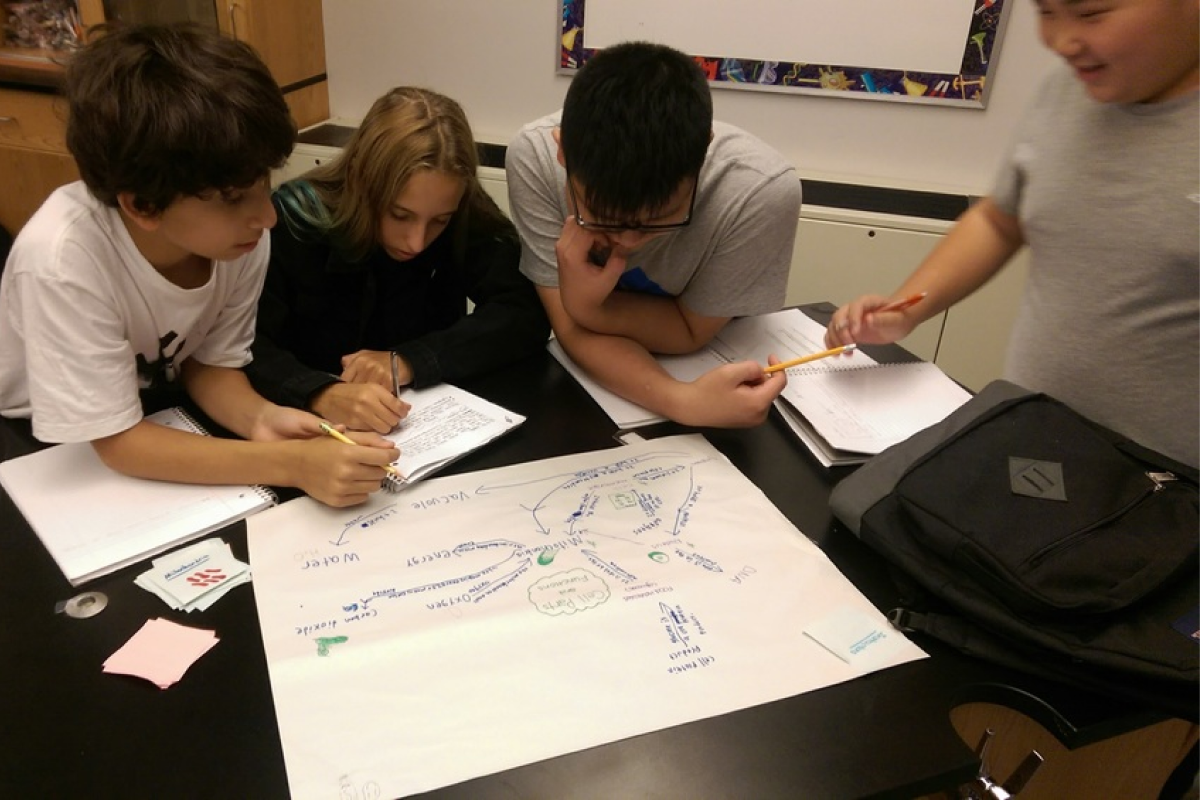
By the last week of school, most students are already “checked out.” They’re exhausted from testing and ready for summer break—and teachers are too! That can make it very tempting to fill these final days with filler activities like videos and handouts. But this causes a school year filled with growth and discovery to end with a fizzle.
Instead, we can harness all of that excitement students feel for the coming summer and channel it into science. Successful end-of-year activities can transform these final class days into a joyous and learning-filled climax, giving students a sense of accomplishment and togetherness, and inspiring them to continue their journeys as citizen scientists throughout the summer and beyond.
To help you finish the year on a high note, our curriculum team has assembled an exciting collection of end-of-year activities, from both the Mosa Mack curriculum and other resources. We will break these activities down into four different activity types:
At the end of this post, we will also outline the key ingredients of successful end-of-year activities to help you develop and hone your own activity ideas.
Design and Engineering Challenges
To complete a design and engineering challenge, students must use their hands and their design thinking skills. They can work individually, in pairs, or in groups, and you can also set up multiple activity stations to allow students to choose their challenges for themselves.
-
- Float Your Boat Challenge (Design Thinking Year 2): Design a ship capable of floating the greatest amount of cargo containers without sinking, then create a model.
-
- Tallest Tower Challenge (Design Thinking Y1) Construct the tallest tower possible (with an observation deck on top) using only provided materials.
-
- Balloon Rockets (CER and Scientific Method – Balloon Lagoon) Analyze and test claims made about a balloon rocket toy, use the Design Thinking process to design a product that works better, and create an ad for the new product.
-
- Food Drop (Gravity) Design and build a solution that will safely deliver supplies to a disaster relief area, using knowledge of gravity and air resistance.
-
- Flying Kites Build, decorate and fly your own kite using a simple kit (this website also includes an extensive guide and other resources to help teachers incorporate the activity)
-
- Water Rockets Design, build and test a water rocket using simple materials to see Newton’s Second and Third Laws of Motion in action.
-
- Water Filtration Challenge Design, build and test a water filtration device based on the same design used aboard the International Space System.
Float Your Boat

Tallest Tower Challenge
Investigations
For investigation activities, students put on their detective hats to solve both fictional and real-life scientific mysteries. Many of the investigations also contain a cross-curricular component that teachers can use to team up with other classrooms.
-
- The Nature of Science: Solve the Mystery of the Pilfered Popcorn through forensic analysis of footprints, fingerprints, hair samples and ink.
-
- Claim-Evidence-Reasoning: Use Claim Evidence Reasoning to verify claims about a balloon rocket, then design, build and test a balloon rocket of your own
-
- Mystery Matter (Matter and Interactions): Identify a mystery substance by investigating color, electrical conductivity, magnetism, and solubility.
-
- Creating Codes (Energy Transfer): Devise a code and send messages using sound waves and light waves
-
- Constellation Box: Design and build a constellation in a shoebox using knowledge of scale in the solar system
Nature of Science
Mystery Matter
Observation and Exploration
These are more varied, informal activities that help students develop the skills of a naturalist, observing and exploring the world around them. With some adjustment, these activities lend themselves to extended/repeat observations, which is a great way for students to continue their science work over the summer.
-
- Nature Hikes/Field Guides: Hike around school property or nearby greenspace to identify various plants and animals (INaturalist is a great tool for this activity – see below in Citizen Science).
-
- Stream Studies: Collect stream water, analyze water pH and microorganisms in water.
-
- Flower Dissection: Dissect and identify the parts of various flowers; explore pollination and symbiotic relationships between flowers and insects.
-
- Bottle Terrarium: Create an ecosystem inside a bottle to explore the connections between plants, water and soil.
Nature Hikes/Field Guides
Bottle Terrarium
Citizen Science: Contributing to a Larger Science Community
The more students see themselves as part of the bigger endeavor of real-world scientific research, the more likely they are to continue their science work after school is out. Here are activities to keep students active in science investigation during the summer and beyond.
-
- Nestwatch: Become part of this nationwide nest-monitoring program to help track status and trends in the reproductive biology of birds.
-
- Invasive Species Reporting: Report sightings of invasive species to assist with invasive species control.
-
- EarthEcho Water Challenge: Test your local water, share the results and join the effort to protect this essential resource
-
- Weather Data: Collect local data for weather forecasting and climate studies
-
- Bee Monitoring: For beekeepers everywhere: monitor and observe your colonies and add to a crowdsourced map.
-
- Butterfly Counts: Join in a butterfly count, or start your own, to gather data to monitor butterfly populations
-
- INaturalist: an app that helps you record observations and share them with other naturalists in a worldwide community
Have more citizen science resources to share- add it here, our own crowdsourced compendium of Citizen Science projects!
What Makes a Great End-of-Year Activity
Our suggestions above are just scratching the surface of what’s possible for end-of-year activities. When brainstorming and focusing your own ideas, here are some criteria to consider:
-
- “Informal science” is more than welcome. At end-of-year, students need a break from the rigors of testing and grading; consider tailoring your activities to be more relaxed, open-ended, oriented towards process over product.
-
- Get “weird” – offbeat, out-of-the-box activities are fun and memorable.
-
- Gamify it – adding an element of friendly competition, perhaps with a prize as incentive, can energize and motivate students. You could even gamify multiple separate single-day activities into a week-long tournament.
-
- Think “carnival.” Each activity is like a theme park attraction or a ride, a brief attention grabbing burst of fun. Set up stations for multiple activities, allowing students to move freely from one to another. Let each student be in charge of a different activity, setting it up and guiding their classmates through it.
-
- Take it outside. Whenever possible, bring your students out into that fresh spring air for their activities. If outdoors isn’t possible, consider other unusual locations on school property that will help make the activity feel special.
-
- Incorporate movement. Look for activities that get your antsy students out of their desks, walking (or running) around, working with their hands.
-
- Teamwork and togetherness. Shape activities that allow students to work together, reinforcing the collaborative bonds they’ve developed over the year.
-
- Cross-curricular activities. Look for activities that explore connections/threads between disciplines: science-themed poetry or art projects; a science skit or song; diving into an amazing event in science history. Consider collaborative projects with other teachers and classrooms geared towards the common goal of keeping a grade level of students engaged.
-
- Motivation for Summer: continuing science exploration after school is out.
Have other suggestions? Feel free to share with us!
Ready to try a Mosa Mack? Get your free unit here.
Interested in getting Mosa Mack Science at your school: Contact Us. We can’t wait to talk.

Leave a Reply